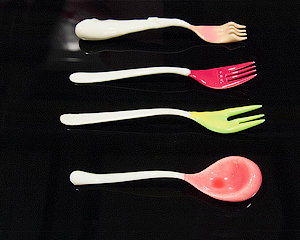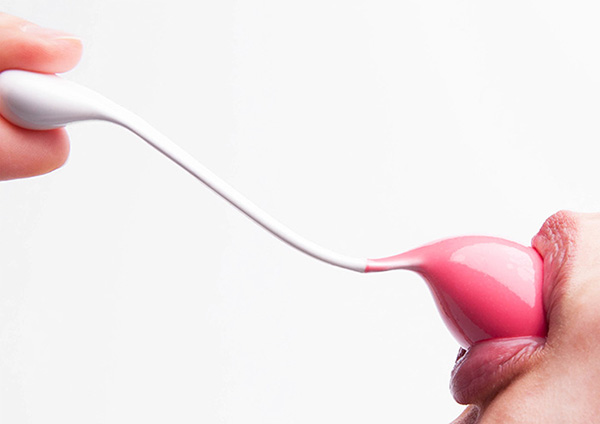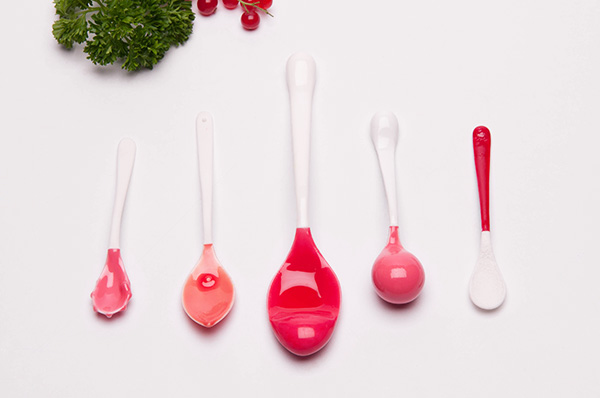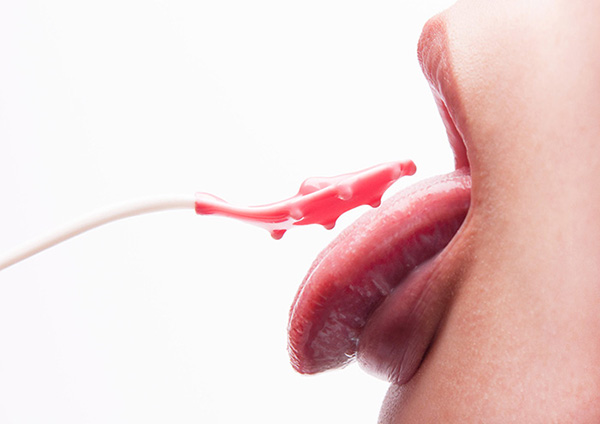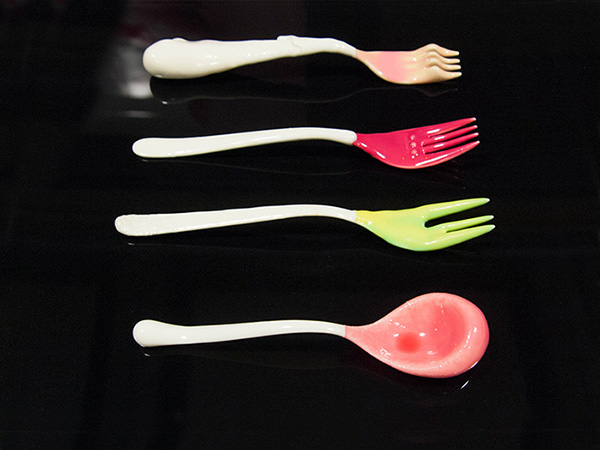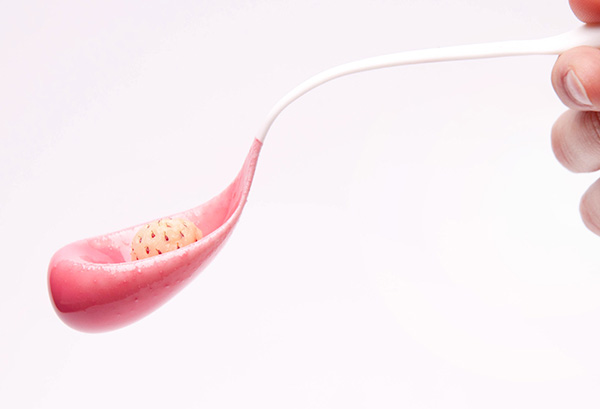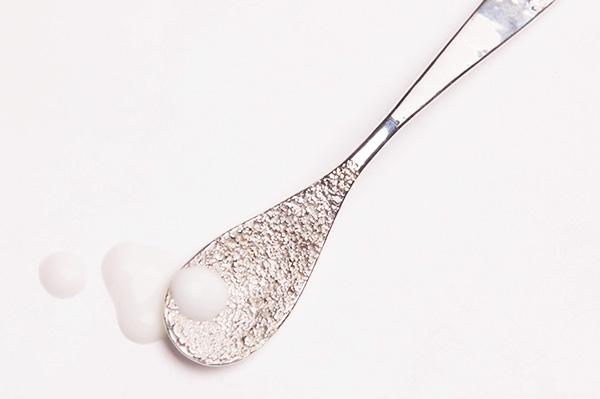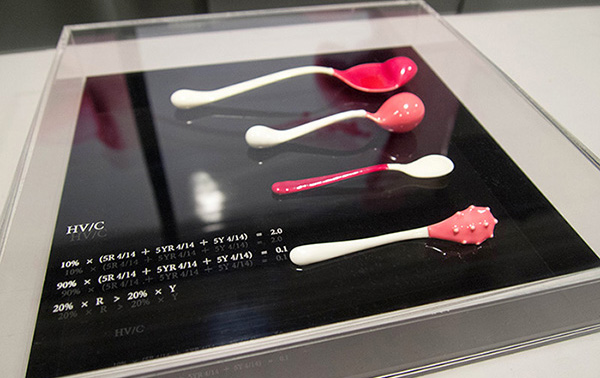Synesthesia comes from the ancient Greek σύν (syn), meaning together, and αίσθησις (aesthesis), meaning sensation and it is a neurological condition where stimulus to one sense can affect one or more of the other senses. After some research involving what can be done to enhance the culinary experience, many great chefs started thinking about ways to excite senses other than taste, but which would still however have an effect on taste and in doing so provide more pleasure.
Jinhyun Jeon, graduate of the Design Academy of Eindhoven however took the whole concept a bit further and tried to think of ways in which cutlery could be used not only as a tool for placing food in our mouth, but also, to find a way through the design to enrich the experience of eating. So she created a set of knobble, bulbous and serrated cutlery to stimulate diners’ full range of senses at the table.
Jeon’s cutleries were based on six sensory elements: color, tactility, temperature, volume, weight, and form. As the designer says, the ceramic pieces explore the effects of color. More specifically, warm colors, such as red and orange, have been found to increase oxygen supply to the brain and stimulate mental activity, this way increasing one’s appetite. Other pieces made of different materials and various textures and shapes, intend to stimulate the sense of touch inside the mouth. The same goes for temperature, which influences the way we taste sugar, salt and bitterness.
The designers’ intention in creating these cutleries was to change the way in which we perceive and utilize every bite and every mouthful of food, this way adding meaning to the procedure of dining and expanding our relationship with food.
